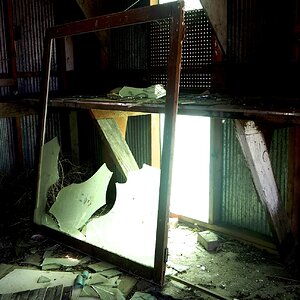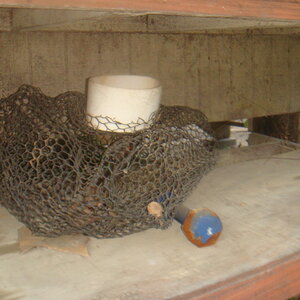Navigation
Install the app
How to install the app on iOS
Follow along with the video below to see how to install our site as a web app on your home screen.

Note: This feature currently requires accessing the site using the built-in Safari browser.
More options
You are using an out of date browser. It may not display this or other websites correctly.
You should upgrade or use an alternative browser.
You should upgrade or use an alternative browser.
Advice needed. (But not urgently)
- Thread starter Fatman
- Start date
- Joined
- Feb 1, 2004
- Messages
- 34,813
- Reaction score
- 822
- Location
- Lower Saxony, Germany
- Can others edit my Photos
- Photos NOT OK to edit
You used a very long shutter speed for bright sunshiny weather!
Even though your aperture was very tiny, you still allowed for too much light get onto your sensor. Hence the overexposure and the movement blurs, both from camera shake (few people only can handhold such a long exposure!) and from a moving object that passed through your frame while you were exposing.
So with such a long exposure in brightest sunshine not even an ND filter will give you enough "shade" to get good exposure.
(Doesn't your camera show you that you are overexposing? Is there not such a little scale inside your viewfinder beneath the frame that has an arrow going from +2 via 0 to -2?)
Even though your aperture was very tiny, you still allowed for too much light get onto your sensor. Hence the overexposure and the movement blurs, both from camera shake (few people only can handhold such a long exposure!) and from a moving object that passed through your frame while you were exposing.
So with such a long exposure in brightest sunshine not even an ND filter will give you enough "shade" to get good exposure.
(Doesn't your camera show you that you are overexposing? Is there not such a little scale inside your viewfinder beneath the frame that has an arrow going from +2 via 0 to -2?)
Digital Matt
alter ego: Analog Matt
- Joined
- Jan 30, 2004
- Messages
- 5,358
- Reaction score
- 73
- Location
- Santa Barbara, CA
- Website
- www.mattperko.com
- Can others edit my Photos
- Photos NOT OK to edit
You'll have to use a neutral density filter. There's no way around it. You have to limit the light coming into the camera, and since you can't change the light falling on the entire scene, you can only regulate what you let your film/sensor see.
rmh159
TPF Noob!
- Joined
- Jun 13, 2006
- Messages
- 1,028
- Reaction score
- 0
- Location
- Milwaukee, WI
- Can others edit my Photos
- Photos NOT OK to edit
A polarizer would also do the same thing though I'm not sure exactly how much light a polarizer allows through where a ND filter will tell you it allows 1/2, 1/4 or 1/8 of the light through (if I'm wrong I'm sure someone can correct me). Since a polarizer can have multiple uses and you mentioned a tight budget I think I would recommend that first and a ND filter aftwards if you're still not happy with the results.
Being able to slow down the shutter speeds during the daytime can have awesome effects on pics... especially any involving moving water (waterfalls, fountains, etc.). Have fun!!
Being able to slow down the shutter speeds during the daytime can have awesome effects on pics... especially any involving moving water (waterfalls, fountains, etc.). Have fun!!
Digital Matt said:You'll have to use a neutral density filter. There's no way around it. You have to limit the light coming into the camera, and since you can't change the light falling on the entire scene, you can only regulate what you let your film/sensor see.
markc
TPF Noob!
- Joined
- Mar 8, 2004
- Messages
- 4,237
- Reaction score
- 6
- Location
- Rochester, NY Velocity: Unknown
- Website
- www.markcarpenter.com
- Can others edit my Photos
- Photos NOT OK to edit
A lower ISO will also help, but from the looks of things, neither that nor a polarizer will be enough. Most polarizers I've seen are about 2 stops, ND4, or 1/4 the light (all the same thing). You might have to stack multiple filters for a bright day. If you shoot color, a polarizer is a good thing to get, so that might be the place to start. Just choose a cloudy day, or better yet, wait until dusk.
elsaspet
TPF Noob!
- Joined
- Dec 14, 2004
- Messages
- 4,054
- Reaction score
- 37
- Location
- Dallas
- Website
- www.visionsinwhite.com
- Can others edit my Photos
- Photos OK to edit
You didn't "high speed sync" your flash, and it looks like your shutter was too long too. My guess is if you go back and look at your meta data, you have some crazy ap like 22 or something.
Edited to add, I went back up and looked at the ap info......32. Dang, my cameras wont even go that high. That's the problem...........that and the lack of high speed sync.
Edited to add, I went back up and looked at the ap info......32. Dang, my cameras wont even go that high. That's the problem...........that and the lack of high speed sync.
Soocom1
Been spending a lot of time on here!
- Joined
- Feb 27, 2006
- Messages
- 3,253
- Reaction score
- 1,489
- Can others edit my Photos
- Photos NOT OK to edit
It looks like to me that you may be shooting at too high of an ISO speed. Drop down the ISO setting, and if that is still too much, then the ND filter is what is left.
mysteryscribe
TPF Noob!
- Joined
- Feb 1, 2006
- Messages
- 6,071
- Reaction score
- 3
- Location
- in the middle of north carolina
- Website
- retrophotoservice.2ya.com
- Can others edit my Photos
- Photos OK to edit
you could also try a pinhole in the lens cap. Though I have no idea what that would do in digital it used to work on the old polaroid 110 to cut the light down tremendously. BTW I like the way it looks now but I'm a bit wierd. Drop your gamma and it look a lot like some of those oriental paintings.
Unimaxium
TPF Noob!
- Joined
- Nov 13, 2004
- Messages
- 2,689
- Reaction score
- 22
- Website
- www.flickr.com
- Can others edit my Photos
- Photos OK to edit
High speed sync?? I don't think he even used a flash in this shot. And if he did, he wouldn't need high speed sync with a 0.3" exposure.elsaspet said:You didn't "high speed sync" your flash, and it looks like your shutter was too long too. My guess is if you go back and look at your meta data, you have some crazy ap like 22 or something.
Edited to add, I went back up and looked at the ap info......32. Dang, my cameras wont even go that high. That's the problem...........that and the lack of high speed sync.
mysteryscribe
TPF Noob!
- Joined
- Feb 1, 2006
- Messages
- 6,071
- Reaction score
- 3
- Location
- in the middle of north carolina
- Website
- retrophotoservice.2ya.com
- Can others edit my Photos
- Photos OK to edit
it may be 3+ stops not just 3.. but hey I like it with a little gamma correction
JamesD
Between darkrooms
- Joined
- Mar 20, 2005
- Messages
- 1,054
- Reaction score
- 43
- Location
- Living in Snapshot reality.
- Can others edit my Photos
- Photos NOT OK to edit
There are some really slow-speed slide films out there. A polarizer definately won't give you sufficient darkening. You could also try waiting til later at night (or earlier in the morning) to get the ambient light level down. Shooting long exposures is problematic in the middle of the day (except for when you want a very short exposure; Murphy's law of exposure states that the shutter speed/aperture you need will be the inverse of the shutter speed/aperture you will get--and also that you will need high-speed film before shooting one tenth of the frames on the roll of slow-speed film you just loaded into the camera--which doesn't apply if you use digital.)
mysteryscribe
TPF Noob!
- Joined
- Feb 1, 2006
- Messages
- 6,071
- Reaction score
- 3
- Location
- in the middle of north carolina
- Website
- retrophotoservice.2ya.com
- Can others edit my Photos
- Photos OK to edit
Now I still think the pin hole in the lens cap will work but I have no way of testing. someone with a digital slr should take a black piece of cardboard and cut a pin hole in it. Hold it against the lens and try it.
Digital Matt
alter ego: Analog Matt
- Joined
- Jan 30, 2004
- Messages
- 5,358
- Reaction score
- 73
- Location
- Santa Barbara, CA
- Website
- www.mattperko.com
- Can others edit my Photos
- Photos NOT OK to edit
There are pinhole body caps for SLRs, which will work fine on DSLRs.
mysteryscribe
TPF Noob!
- Joined
- Feb 1, 2006
- Messages
- 6,071
- Reaction score
- 3
- Location
- in the middle of north carolina
- Website
- retrophotoservice.2ya.com
- Can others edit my Photos
- Photos OK to edit
I know a pinhole over a lens in a retro gives a times exposure on film. You don't have to lose your lens sharpness either since you are still shooting with your regular lens. At least not very much I would think. So if you used a lens cap with a pin hole not a body cap with a pinhole it should work just peachy keen.
That's just a guess since Im not a digi guy.. It would be cheaper then either of the alternatives. drill you tiny hold dead center of your lens cap and put a bit of black tape over it when not in use.
I would tray a bit of poster board first though just to make sure before I ruined a good lens cap. It should work...
That's just a guess since Im not a digi guy.. It would be cheaper then either of the alternatives. drill you tiny hold dead center of your lens cap and put a bit of black tape over it when not in use.
I would tray a bit of poster board first though just to make sure before I ruined a good lens cap. It should work...
malweth
TPF Noob!
I'm very new to this (haven't even bought my DSLR yet), but RE the polarize filter (not the ND)...
What direction is the polarity in the polarizer filter? I thought I saw (quite likely wrong) that polarization is usually circular in this filter... if this is the case, stacking two 1/4 polarizers would result in only 1/4 light.
If the filters are directional, two 1/4 polarizer filters should range from 1/4 to 0 light depending on how the two are screwed together.
How does this work?
Most polarizers I've seen are about 2 stops, ND4, or 1/4 the light (all the same thing). You might have to stack multiple filters for a bright day.
What direction is the polarity in the polarizer filter? I thought I saw (quite likely wrong) that polarization is usually circular in this filter... if this is the case, stacking two 1/4 polarizers would result in only 1/4 light.
If the filters are directional, two 1/4 polarizer filters should range from 1/4 to 0 light depending on how the two are screwed together.
How does this work?
Similar threads
- Replies
- 9
- Views
- 241
- Replies
- 3
- Views
- 134

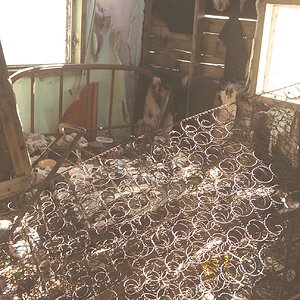
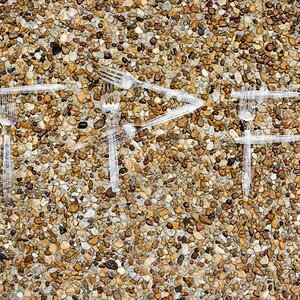
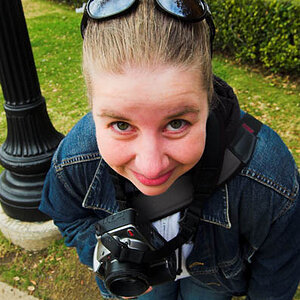

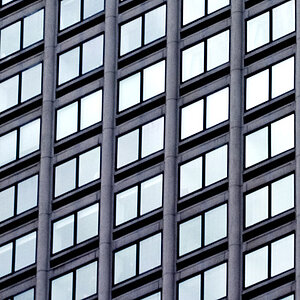

![[No title]](/data/xfmg/thumbnail/37/37534-e0f67d1d14bd79cca15937359f0e4c94.jpg?1619738132)


![[No title]](/data/xfmg/thumbnail/37/37602-1ef8dbb1c2d0e4ff347ee65d328c3603.jpg?1619738147)
